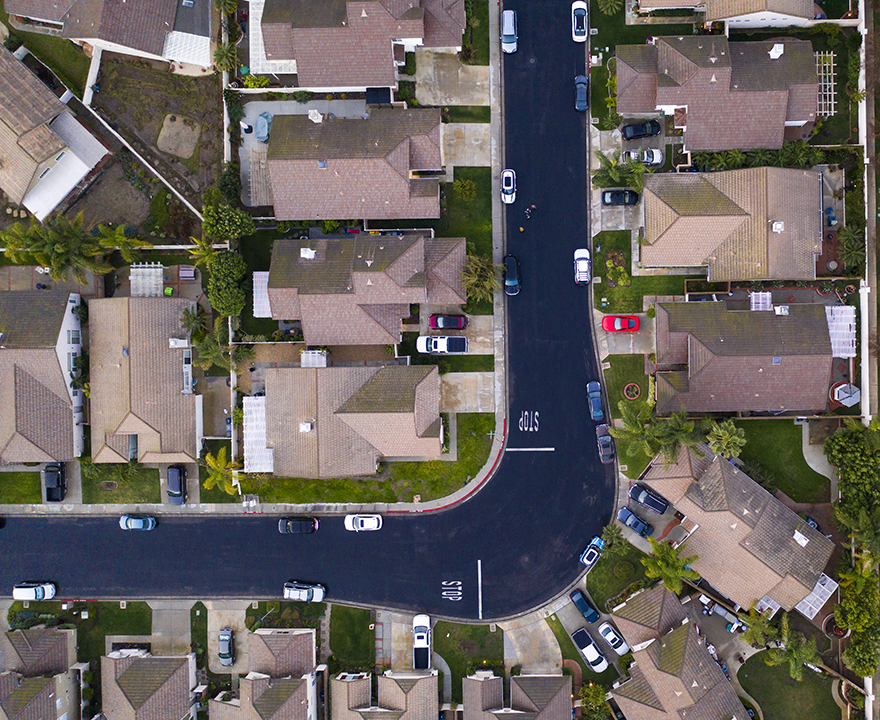Economic and household costs of mortgage rate lock

Economic and household costs of mortgage rate lock
- September 17, 2024
- Study by UC economists Jack Liebersohn, UC Irvine, and Jesse Rothstein, UC Berkeley, detail the effect of rapidly rising interest rates on homeowner mobility, economy
 Rising interest rates between 2022 and 2023 caused more U.S. homeowners to stay put,
reducing moves by 16% and costing the U.S. economy an estimated $20 billion, according
to a new study by University of California economists. Known as “mortgage rate lock,”
the phenomenon underscores how interest rate increases discourage current homeowners
with lower, 30-year fixed rate mortgages from considering a move.
Rising interest rates between 2022 and 2023 caused more U.S. homeowners to stay put,
reducing moves by 16% and costing the U.S. economy an estimated $20 billion, according
to a new study by University of California economists. Known as “mortgage rate lock,”
the phenomenon underscores how interest rate increases discourage current homeowners
with lower, 30-year fixed rate mortgages from considering a move.
“In real numbers, we calculate that rate lock discouraged 800,000 moves during that one-year period,” says study coauthor Jack Liebersohn, UC Irvine economics assistant professor. “This has consequences for the economy which lost an average of $296 per household with a mortgage, but also for homeowners who are foregoing moves for things like jobs, family and the like because they can’t afford or don’t want a higher house payment due to the higher interest rate.”
Findings, coauthored with Jesse Rothstein, UC Berkeley public policy and economics professor and Carmel P. Friesen Chair in Public Policy and the David Pierpont Gardner Chair in Higher Education, are published in the National Bureau of Economic Research Working Paper Series and have been featured in The New York Times, NPR and The Dallas Morning News.
From the early 80s until the pandemic, interest rates were on a downward trajectory. Beginning December 2021 until November 2022, average rates rose from 3.10% to 6.95%. They continued to rise thereafter, hitting 7.79% in October 2023, a peak higher than any point since 2001, says Liebersohn.
“These rate increases were much larger than have been seen in recent decades and were largely unexpected, providing a great deal of statistical power and a unique natural experiment with which to measure rate lock,” he says.
Using a statistical tool known as a hazard model, he and Rothstein were able to show that mobility rates of homeowners with mortgages have fallen dramatically since 2021, with heavier concentration among mortgages that originated when rates were lower.
To illustrate: Suppose a homeowner took out a $200,000 fixed rate, 30-year mortgage in 2016 at 3.5%. A move to a similarly priced home in 2023, with the going rate of 7% at the time, would increase the monthly payment by 38% and cost $110,000 more over the life of the loan, the coauthors explain.
“The homeowner can avoid this increase entirely by simply not moving – and that’s what our data shows happened,” Lierbsohn says. “Rate lock discourages mobility and could lead a borrower to avoid moves that may otherwise be desirable, say for a new job opportunity.”
For homeowners who did move during 2022-23 and thus conceded their lower rate mortgage for a new one at 7%+, they saw an average $5,000 increase in annual payments.
“Previous studies have documented the effects of mortgage lock during earlier periods, but to our knowledge, ours is the first to estimate the effect during the rapid rate increases of 2022 and 2023,” says Liebersohn. “This is important because our findings show that rate lock mattered more during this period than any other prior due to the large gap between rates on outstanding mortgages and market rates. Our estimates indicate there was very little effect of rate lock prior to 2022 in comparison.”
To read the study in full, visit https://www.nber.org/papers/w32781.
-----
Would you like to get more involved with the social sciences? Email us at communications@socsci.uci.edu to connect.
Share on:


connect with us: